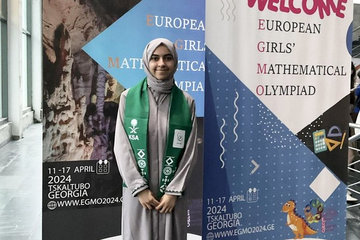
As time passed, this science developed further allowing humans to set foot in space. Arab women have been at the forefront from the very beginning trying to reach the stars.
Fatima Al-Fihri is a historical character known for her teachings of a number of sciences, including astronomy. Founding the first university in the world in 859, the University of Al-Karaouine in Morocco still exists today. She is an inspiration to Muslim women around the world and is also known as Umm Al-Banine meaning ‘Mother of the Boys.’
Reem Turkomani is a Syrian astronomer and visiting professor in astronomical physics in Imperial College, London University. She is an Associate of the Royal Society in Britain and was introduced to astronomy through engineering and physics. Today Turkomani focuses her research on waves and disturbances on astrophysics.

Reem Turkomani
Marian Shadid is a Moroccan researcher and astronomer in Cote d’Azur National Observatory. She is a professor at Nice University and is the first female scientist to reach the South Pole. She was chosen amongst the Davos List of the Most Influential Young People in 2008.

Marian Shadid
Laila Abdulatif is one of the most prominent forecasters in the world of astrological constellations. She has made great contributions to studies related to astrological forecasts. She was born in Beirut to Sheikh Mohammad who was an Egyptian Mufti in the Azhar Mosque. Laila has many followers and is respected by people around the world.

Laila Abdulatif
Sandy Al-Maghazi heads the Astronomy Club in the American University in Cairo. Her interests in astronomy began at a very young age while she was studying space and planets for the first time during her third grade in school. She received three different research scholarships, one of which was training in the Harvard Smithsonian Center for astrophysics.

Sandy Al-Maghazi

















